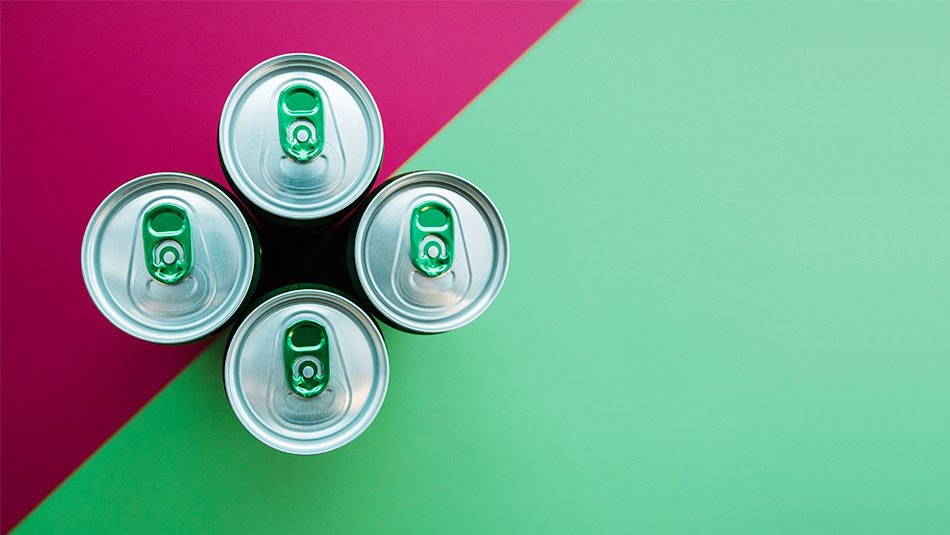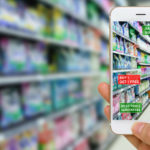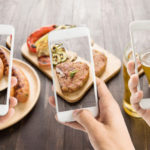
What is the Role of Food Packaging in the Digital Age?
The online era is creating enormous change in the retailer landscape. And there is plenty more to come.
It is now projected by Forrester Research that in the next 3 to 5 years 17% of all retail sales will take place online. While online grocery sales now account for merely 2% of overall shopping today, The Food Marketing Institute and Nielsen estimate that online penetration will increase to 70% of homes and become a one hundred-billion-dollar business within the next few years.
So how will this affect your food brand’s approach to packaging? Will packaging remain an important and effective marketing tool? Or will its main function be to protect the product from damage during the delivery process?
Great Food Packaging Gives Permission to Purchase
Very few people actually think they’re swayed by advertising. But as food marketers we know better than that, right? If you’re anything like me, you’ve been busy designing campaigns, developing brands, dreaming up product innovations, and wrapping each with the ultimate packaging design to woo even the stealthiest of consumers.
Don’t get me wrong, packaging is the ultimate chance to tell your brand story to your customer. It communicates a brand’s who, what, and why scenarios. Undoubtedly yours has played out nicely in the past, right? Your food brand has popped on shelf, your appetite appeal felt on point, and most of all, you looked better than the other guys.
But, the rules are changing. Consumers’ online behavior and global expectations are creating new cost-of-entry details we can’t ignore. And it doesn’t make any difference if that customer is looking at an online menu or standing in front of the shelf. The ground rules of good packaging design still apply.
So, how do you make sure you’re still looking better than the other guys? Today’s food packaging must go beyond traditional norms to quickly articulate your story while simultaneously evoking empathy and instilling confidence. Not only does it still need sensorial appeal, but it needs to create an unapologetic, transparent brand identity, mission, and ethos. Using these tenets authentically ensures you’re producing packaging that gives consumers permission to purchase.
Food Packaging Now Has a Bigger Role
Great food packaging has always helped to increase sales. Like the Coke personalization campaign. Chobani’s Flip yogurts. And Halo Top Creamery’s protein ice cream.

But now, food packaging has to help make the sale while also protecting the product on its journey to the refrigerator. In fact, a recent study conducted at Rutgers University found that 47% of meal kits arrived too warm to safely consume. As consumers take notice, brands that don’t evolve to be on the forefront of innovation will fall short in the online space.
Timestrip and Insignia Technologies are two companies addressing food safety through innovative package design. Their smart packaging technology bolsters more traditional designs with on-product indicators. Their on-product technology monitors elapsed time since production, temperature changes, and even exposure to gases and UV light. Leveraging intelligent packaging design systems like this exudes confidence and care to your target audience. It also helps to create an emotional connection with consumers who ultimately want to know that the brands they purchase have their best interest in mind.
Sustainable Food Packaging is the New Sexy
Sustainability. That word feels like it’s everywhere, doesn’t it? And maybe for good reason. Social pressures are creating change from local legislature bans to company-wide packaging overhauls. The fact is, millennials and Gen Z want products and packaging that are natural, climate neutral, and recyclable. Sustainable packaging is also playing a large role across e-commerce. Online meal kit services are just one example where the struggle is real.
While convenience and price top the list in purchase power, consumers are also willing to pay more for brands that invest in eco-friendly practices and plant-based materials. Brands like Boxed Water Is Better and Nature’s Path Foods are boasting their messaging through their packaging. And it’s working to change the conversation. So much so that mega CPG companies who have previously fallen short, are quickly making moves to catch-up. PepsiCo and Coca-Cola are working to develop biodegradable bottles made from ingredients like mushrooms and seaweed. DanoneWave and Nestle Waters are also working to produce at least 75% bio-based PET bottles by 2020 before scaling to 95% in 2022. In five years, next-level sustainability will be the new normal.

Food Packaging Transparency Cuts Through the Clutter
In an already saturated food industry, the e-commerce grocer Brandless™ scored nearly $50M in three rounds of funding prior to its launch in 2012. And they’ve managed to keep investors happy ever since. Their promise to their customers is exactly what they stand for. Their message doesn’t come through on a press release, it’s on their packaging. Where consumers feel they normally navigate a messy, crowded marketplace to find products they trust, Brandless™ has cut through the chaos by simply putting what’s inside the package on the label, and nothing else. And they’ve done so at a price point their customers can afford, capitalizing on minimalist trends while rebelling against internet clutter.

Similar success has been found with Kellogg’s freshly acquired RXBar, fueling revenue with deliberately simple ingredients and even simpler design aesthetic.
Consumer-Centric Packaging for the Win
Consumers are more empowered than ever. And the new generation is highly skilled at finding better-for-you alternatives. Across all segments, consumers want to feel they not only relate to a brand but also that a brand is looking out for them, rather than duping them. As food retail continues to morph and adjust to growing consumer demands, so too will our food marketing expectations. My bet is we’ll see food packaging changing for the better.





